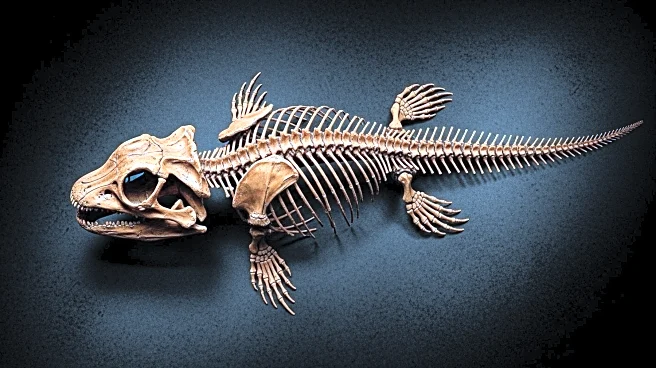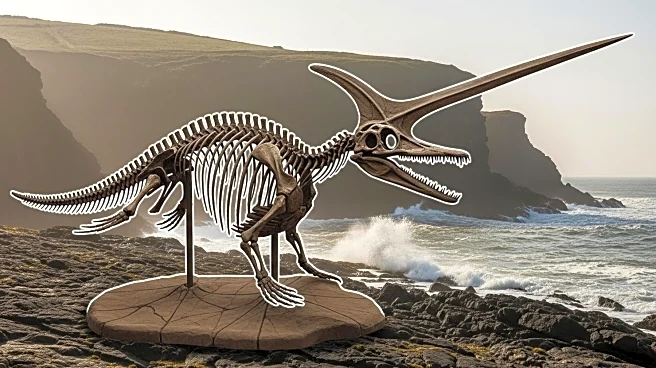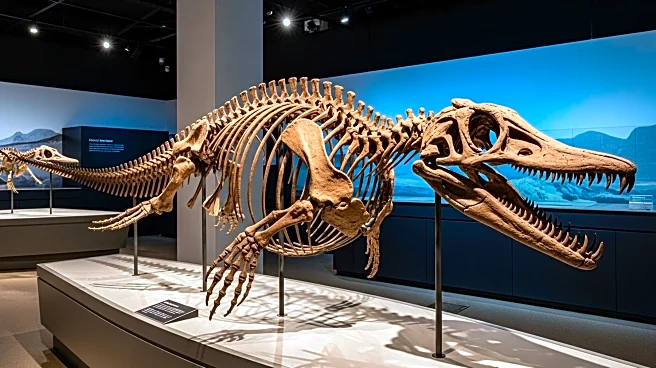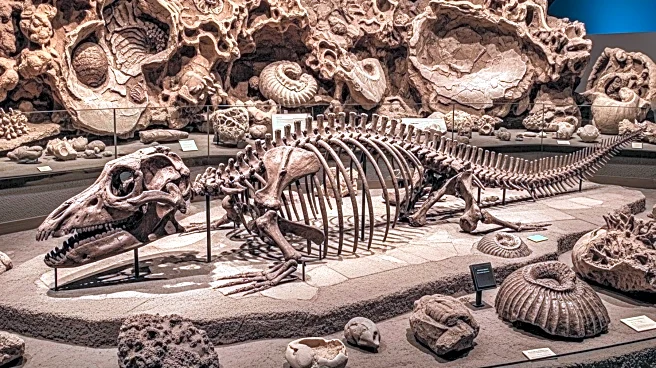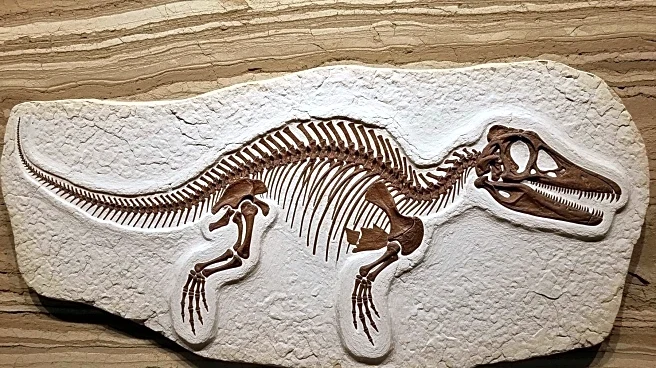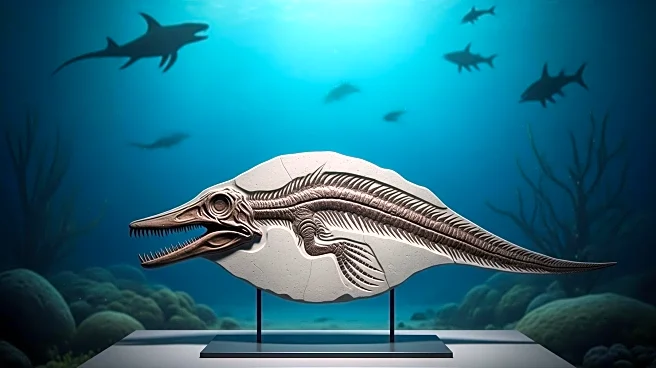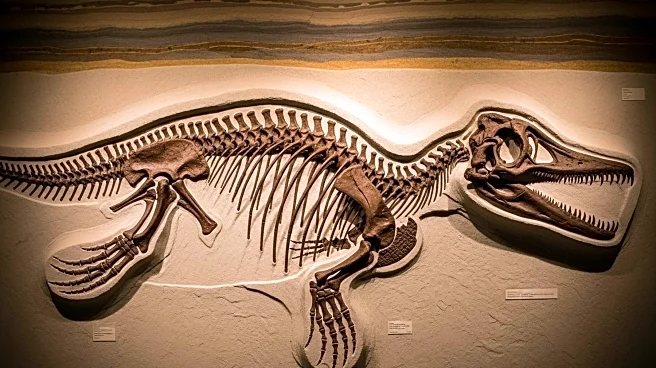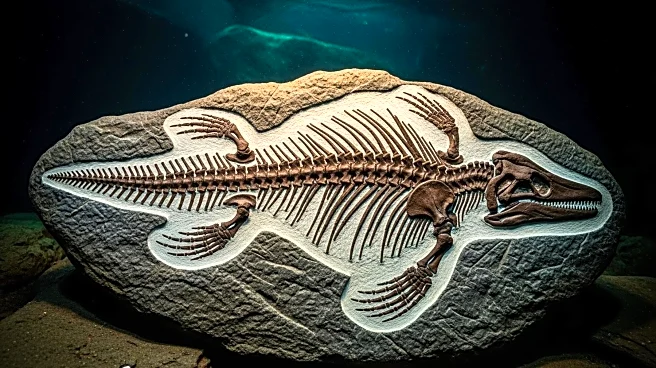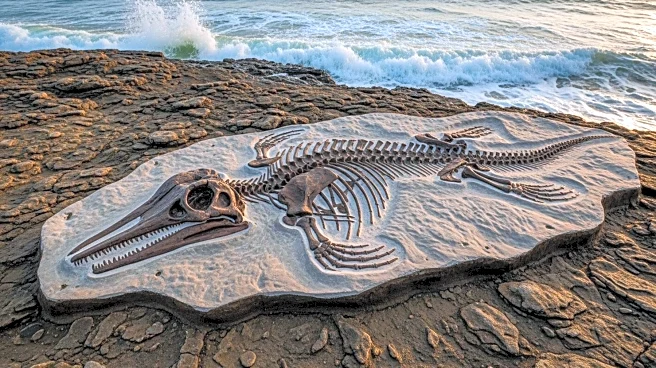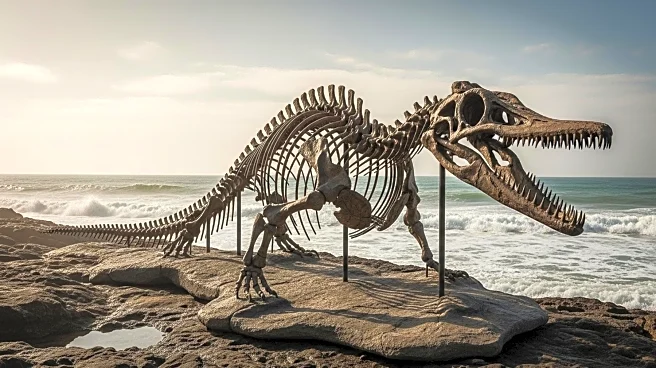What's Happening?
Researchers have identified a new species of ancient marine reptile, named Xiphodracon goldencapsis, from fossils found in England. This ichthyosaur, discovered by Chris Moore in 2001, lived during the Early Jurassic era about 190 million years ago. The fossil includes a skull with a large eye socket and a long, sword-like snout, preserved in three dimensions. The study, published in the journal Papers in Palaeontology, highlights unique features such as unusual bones around the nostrils and very narrow teeth, suggesting the reptile preyed on soft, small animals like squid. The discovery adds to the understanding of ichthyosaur diversity and evolution.
Why It's Important?
The identification of Xiphodracon goldencapsis provides valuable insights into the diversity and evolutionary history of ichthyosaurs during the Early Jurassic period. This discovery is crucial for understanding the ecological dynamics of ancient marine environments and the adaptations of prehistoric predators. The fossil's preservation allows for detailed anatomical studies, which can inform theories on the evolution of marine reptiles. The research contributes to the broader field of paleontology by filling gaps in the fossil record and enhancing knowledge of species that lived during a time of significant ecological change.
What's Next?
The fossil remains on display at the Royal Ontario Museum, where it continues to be studied by researchers. The findings may lead to further investigations into ichthyosaur evolution and the environmental conditions of the Early Jurassic period. Scientists may explore other fossil sites to uncover additional specimens, potentially revealing more about the marine ecosystems of that era. The study could influence future paleontological research and conservation strategies for fossil-rich regions.
Beyond the Headlines
The discovery of Xiphodracon goldencapsis highlights the importance of international collaboration in paleontological research. The fossil's study involved experts from various institutions, demonstrating the value of shared scientific knowledge. Public exhibitions of such fossils can enhance cultural appreciation for natural history and promote educational outreach. The research also raises ethical considerations regarding fossil collection and the role of private collectors in scientific discovery.

